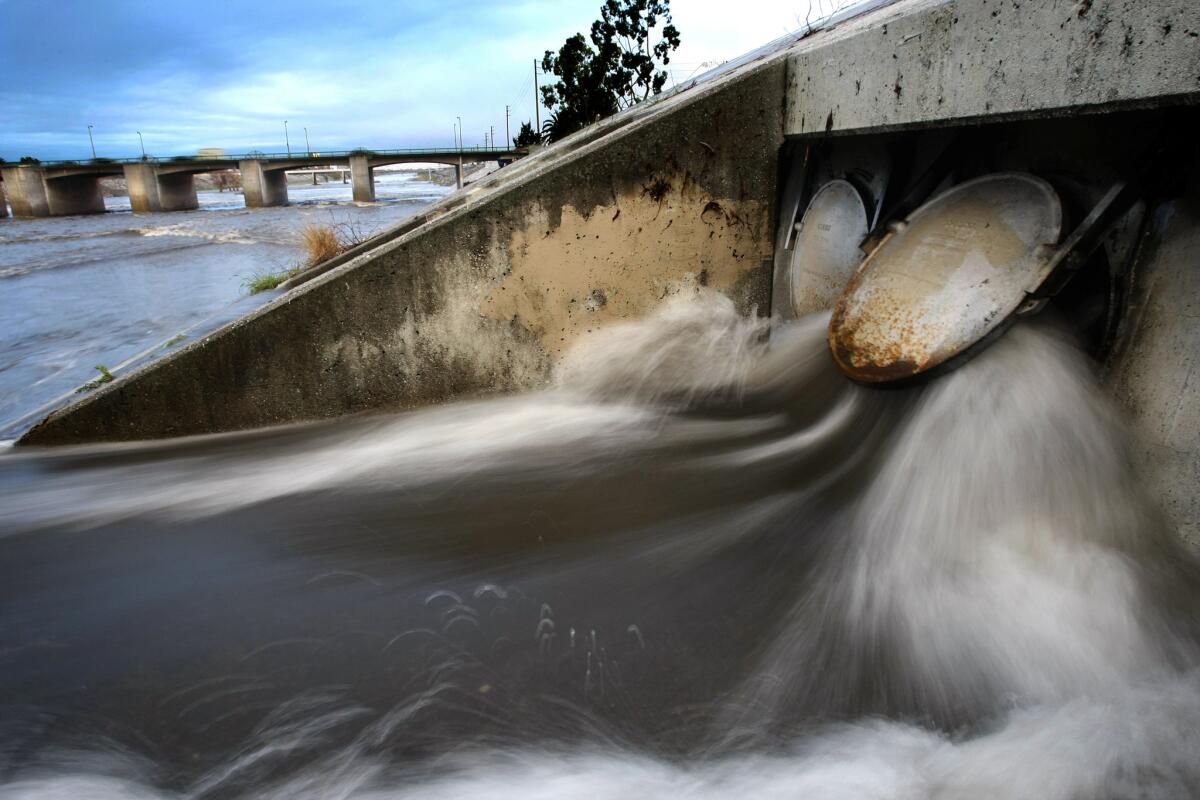$4-million settlement will fund stormwater projects and a ‘green street’ for Watts

A South Los Angeles street will get an environmentally friendly face-lift, and new rain gardens and cisterns soon will appear at homes across Los Angeles County thanks to a $4-million settlement reached late last month.
The agreement comes more than eight years after a pair of environmental advocacy organizations sued Los Angeles County and the Los Angeles Flood Control District over high levels of pollution in stormwater that flowed into the Los Angeles and San Gabriel rivers.
Specifically, the settlement will provide $2.8 million to develop and create a “green street” along 103rd Street in Watts and $1.2 million to fund small-scale stormwater capture, cleaning and reuse projects across unincorporated parts of L.A. County that are within the Los Angeles Flood Control District.
“We’re happy,” said Bruce Reznik, executive director of L.A. Waterkeeper, one of the groups that sued the county. “We’re really trying to focus on underserved communities.”
Judith Fries, principal deputy county counsel, said the county is glad “to have the case behind us,” adding that now, officials can focus on their efforts to reduce stormwater pollution.
Watts already has drawn up plans for a green street and has long wanted to develop a sort of Main Street for the neighborhood, said Steve Fleischli, the water program director for the Natural Resources Defense Council, which also sued the county.
The green-street project will add trees, drought-tolerant landscaping, solar-powered trash cans, porous pavement and other improvements aimed at helping capture, clean and reuse stormwater before it runs into the Los Angeles River. Court documents say the project must be completed within four years.
The remaining funds from the settlement will go toward a variety of so-called “stormwater retrofit projects” administered and implemented by local nonprofit organization TreePeople.
“It’s a double whammy because when you keep the water clean, you can capture it and reuse it for water supply,” Fleischli said. “We should be doing this much more across California and particularly in coastal areas in Southern California.”
Five years of drought have pushed discussions about L.A.’s water security and reliability to the forefront. Local officials, including Mayor Eric Garcetti, have called on the city to reduce its dependence on an imported supply and produce more of its water locally.
The city ramped up its efforts earlier this year when officials broke ground on a $29-million expansion of the Tujunga Spreading Grounds — a 150-acre tract of porous soil in the northeast San Fernando Valley that can capture rainwater that falls from the sky or stormwater that runs off from nearby mountains and hills.
Still, Reznik acknowledged that many of Southern California’s stormwater improvements are “niche projects.”
“We really need to bring this to be the norm in L.A., and $4 million isn’t going to get us there,” he said. “But if we can get to 40 homes and do a major street project in Watts, we’re taking an every-project-helps approach.”
The settlement agreement caps a longstanding court battle between environmental groups and the county that saw the local case wind its way, at one point, to the U.S. Supreme Court.
In order to discharge stormwater into rivers, the county had to obtain a federal Clean Water Act permit and ensure that the water it discharged did not exceed the pollution limits set by the permit.
The settlement comes after federal courts found the county and the flood control district liable for exceeding those limits more than 400 times combined.
Twitter: @ByMattStevens
More to Read
Sign up for Essential California
The most important California stories and recommendations in your inbox every morning.
You may occasionally receive promotional content from the Los Angeles Times.











